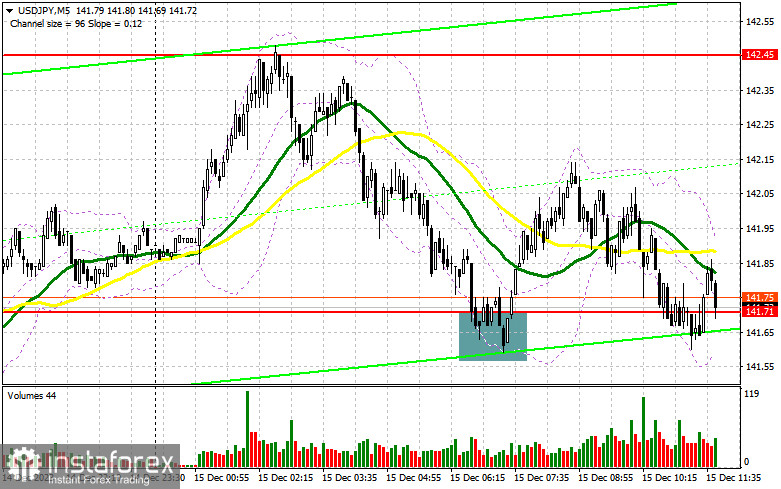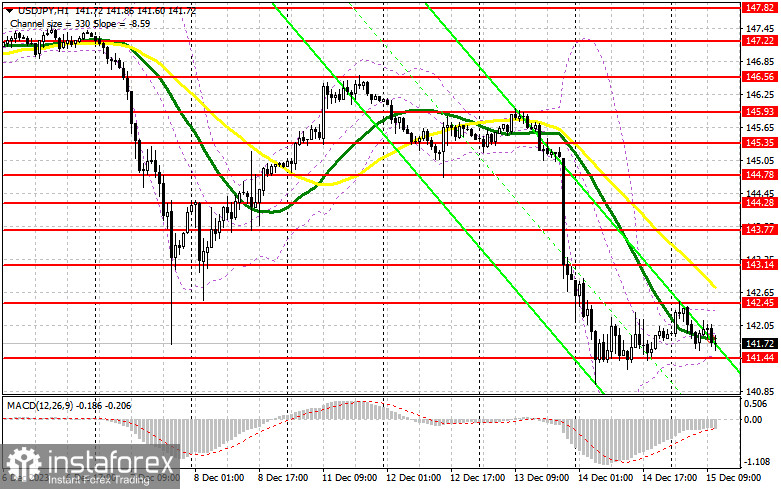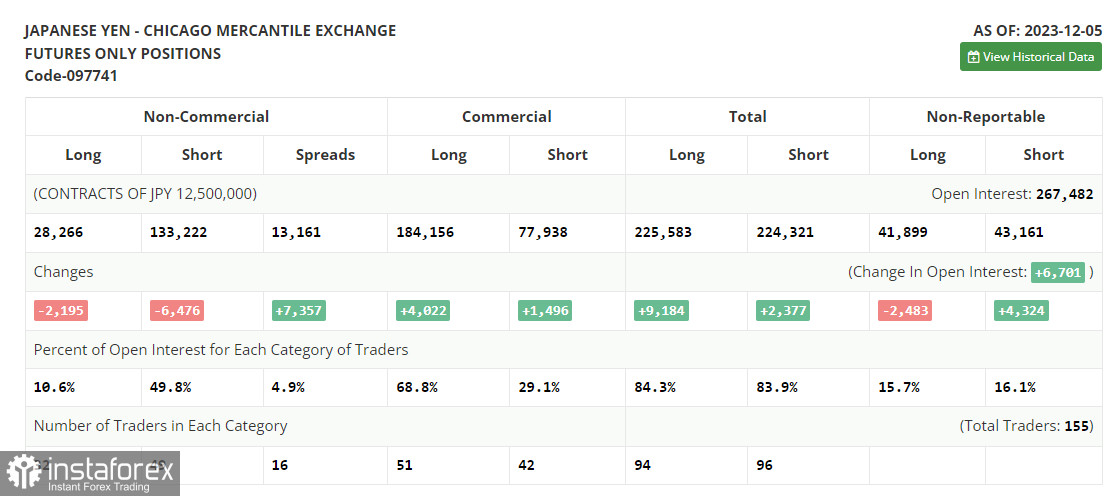In my morning forecast, I drew attention to the level of 141.71 and recommended making trading decisions based on it. Let's take a look at the 5-minute chart and analyze what happened there. The decline and the formation of a false breakout around 141.71 allowed for a buy signal, resulting in an increase in the pair by more than 35 points. However, the pressure on the dollar returned afterward. For the second half of the day, the technical picture was partially revised.

To open long positions on USD/JPY, it is required:
Considering that we already worked with the level of 141.70 in the first half of the day, the chances of major players showing themselves there again are extremely low. Therefore, I recommend emphasizing American statistics and basing decisions on incoming data. In the second half of the day, indicators for the Manufacturing Purchasing Managers' Index (PMI), the Services Business Activity Index, and the Composite PMI for the United States will be published. If the data turns out to be better than economists' forecasts, pressure on the yen will return, and the dollar will receive support, allowing it to stay around the local minimum. A false breakout near the new support at 141.44 would signal the opening of long positions with the aim of another attempt to recover to the area of 142.45 – resistance formed by the results of today's Asian session. Breaking and reverse testing from top to bottom of this range on the background of good US statistics will also lead to a buying entry point capable of pushing the pair to a larger correction area around 143.14, where moving averages are in favor of sellers. The ultimate target will be the area of 143.77, where I will take profit. In the scenario of USD/JPY decline and the absence of buyer activity at 141.44 in the second half of the day, pressure on the pair will only increase, leading to further selling. In that case, I will attempt to enter around 140.63 – a new monthly minimum. But only a false breakout there will signal the opening of long positions. I plan to buy USD/JPY immediately on a rebound only from 139.76, aiming for a pair correction down by 30-35 points within the day.
To open short positions on USD/JPY, it is required:
Sellers maintain the initiative, and most likely, the decline in the pair will continue, but for this, weak US statistics are needed, which I doubt. If the pair reacts with growth to the data, the formation of a false breakout around 142.45 will be a good signal for selling, pushing USD/JPY to the nearest support at 141.44. Breaking and reverse testing from the bottom to the top of this range will deal a more serious blow to buyer positions, leading to the clearing of stop orders and opening the way to 140.63. A more distant target will be the area of 139.76, where I will take profit. In the scenario of USD/JPY growth and the absence of activity at 142.45, in which I have doubts, nothing catastrophic will happen. In that case, it's best to postpone sales until testing the next resistance at 143.14. If there is no downward movement there as well, I will sell USD/JPY immediately on a rebound from 143.77, but only counting on a pair correction down by 30-35 points within the day.

Indicator signals:
Moving averages:
Trading is conducted below the 30 and 50-day moving averages, indicating further pair decline.
Note: The author considers the periods and prices of moving averages on the hourly chart H1, which differs from the general definition of classical daily moving averages on the daily chart D1.
Bollinger Bands:
In case of a decline, the lower boundary of the indicator at around 141.44 will act as support.
Indicator Descriptions:
- Moving average (MA, determines the current trend by smoothing volatility and noise). Period 50. Marked on the chart in yellow.
- Moving average (MA, determines the current trend by smoothing volatility and noise). Period 30. Marked on the chart in green.
- MACD indicator (Moving Average Convergence/Divergence, determines the convergence/divergence of moving averages). Fast EMA period 12. Slow EMA period 26. SMA period 9.
- Bollinger Bands (Bollinger Bands). Period 20.
- Non-commercial traders - speculators, such as individual traders, hedge funds, and large institutions using the futures market for speculative purposes and meeting certain requirements.
- Long non-commercial positions represent the total long open position of non-commercial traders.
- Short non-commercial positions represent the total short open positions of non-commercial traders.
- The total non-commercial net position is the difference between the short and long positions of non-commercial traders.





















